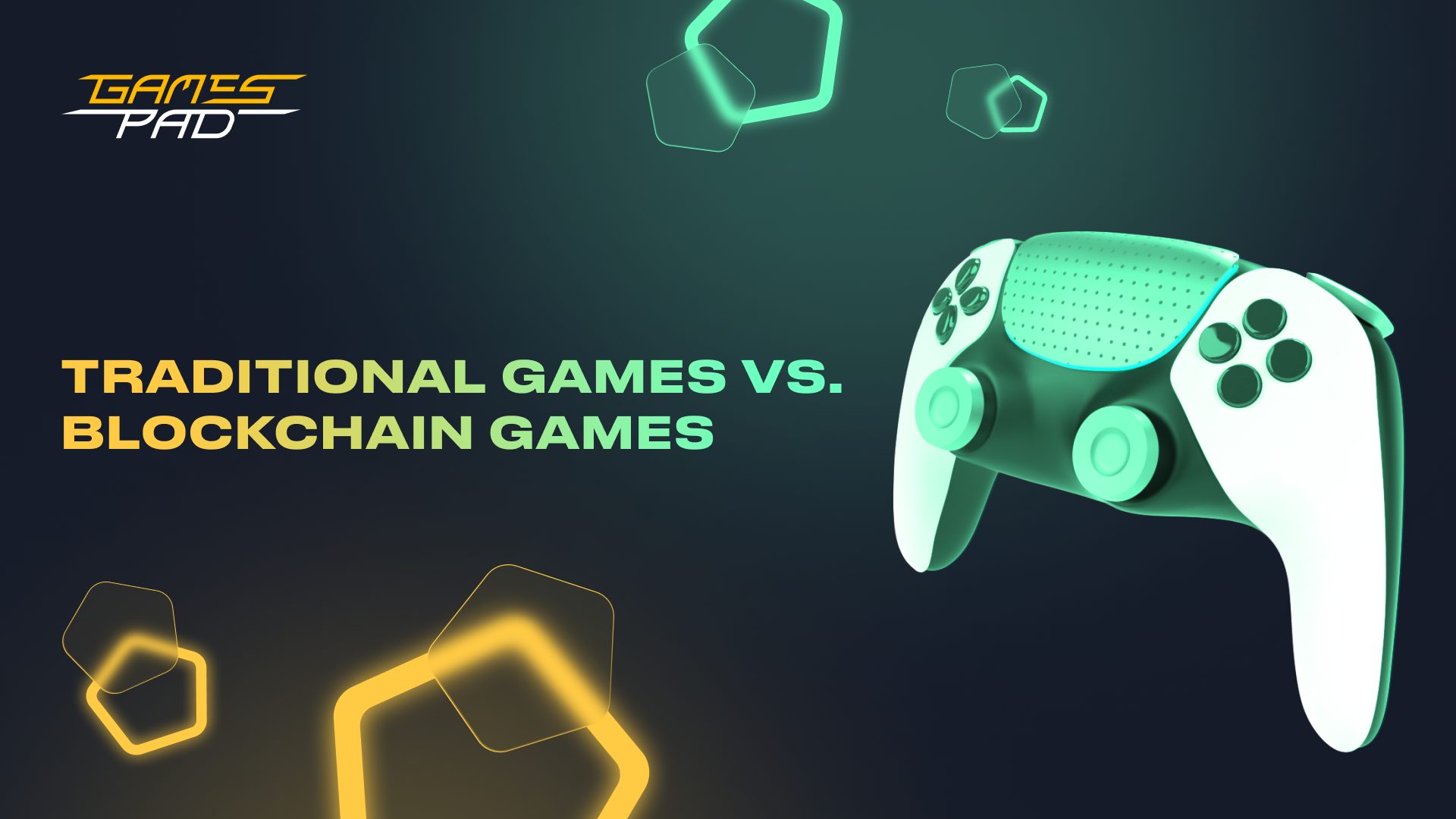User Tag List
Results 1 to 1 of 1
-
01-31-2025 #1Moderator


- Reputation
- 1
- Join Date
- Jul 2024
- Posts
- 2,678
- Thanks G/R
- 1/0
- Trade Feedback
- 0 (0%)
- Mentioned
- 0 Post(s)
- Tagged
- 0 Thread(s)
AI in Gaming: Bridging the Gap Between Traditional and Blockchain Games
AI in Gaming: Bridging the Gap Between Traditional and Blockchain Games

Introduction
The gaming industry is undergoing a major transformation with the integration of Artificial Intelligence (AI) and blockchain technology. Traditional games have long leveraged AI for enhanced gameplay experiences, but the rise of blockchain games has introduced decentralized ownership, play-to-earn (P2E) models, and interoperability. However, these two gaming paradigms often operate in silos. AI has the potential to bridge this gap, bringing enhanced experiences and efficiency to both traditional and blockchain gaming ecosystems.
This article explores how AI is facilitating the convergence of traditional and blockchain games, its role in game design, security, and economy, and the future potential of AI-powered gaming experiences.
AI in Traditional Gaming
AI has played a crucial role in the evolution of traditional gaming. From basic rule-based NPCs (non-playable characters) to advanced machine learning-based behaviors, AI has significantly enhanced player experiences.
1. Enhanced NPCs and Opponent Behavior
Traditional games have relied on AI for dynamic enemy behavior and NPC interactions. AI-powered NPCs can adapt to players’ actions, creating more immersive and unpredictable gameplay experiences. Machine learning models analyze player behavior and adjust difficulty levels accordingly, making games more engaging and challenging.
2. Procedural Content Generation (PCG)
AI-driven procedural content generation allows developers to create vast, unique game worlds without manual design efforts. Titles like No Man’s Sky and Minecraft use procedural generation to craft expansive environments, keeping gameplay fresh and unpredictable.
3. Realistic Physics and Animation
AI-powered physics engines enhance realism in traditional games. Neural networks can generate realistic character animations and facial expressions, reducing the need for manual animation processes. This makes interactions in games more fluid and lifelike.
4. Personalized Player Experience
Modern AI algorithms analyze player behavior to personalize experiences, recommending customized content, adjusting difficulty levels, and generating in-game events that align with individual player preferences.
AI in Blockchain Gaming
Blockchain gaming brings decentralization, digital ownership, and economic incentives to gaming ecosystems. However, it also presents challenges such as scalability, fraud prevention, and player engagement. AI plays a crucial role in solving these issues.
1. Smart Contracts Optimization
Smart contracts govern transactions and interactions in blockchain games. AI can optimize smart contract performance by reducing gas fees, predicting fraudulent activities, and automating transaction validation, ensuring secure and efficient gameplay.
2. Anti-Fraud and Security Measures
AI-driven security systems can detect fraudulent activities such as multi-accounting, botting, and in-game asset theft. Machine learning algorithms analyze player behavior patterns and identify anomalies, reducing fraud risks in blockchain-based economies.
3. AI-Driven NFT Valuation
NFTs (non-fungible tokens) represent unique in-game assets, but their valuation remains volatile. AI can assess market trends, historical sales data, and rarity attributes to determine fair NFT pricing, enhancing trust and stability in blockchain game economies.
4. Automated Asset Generation and Management
AI can automate the creation of in-game assets, such as characters, weapons, and environments, ensuring unique and valuable items for blockchain games. Additionally, AI-driven asset management systems can help players track and optimize their digital assets efficiently.
Bridging Traditional and Blockchain Gaming with AI
The convergence of traditional and blockchain gaming requires a seamless integration of decentralized ownership with immersive gameplay. AI serves as a key enabler of this bridge.
1. AI-Powered Cross-Platform Interoperability
One of the biggest challenges in merging traditional and blockchain games is interoperability. AI can facilitate cross-platform asset transfers, ensuring that NFTs and in-game assets can move seamlessly between different gaming environments. This will allow traditional gamers to gradually explore blockchain gaming without disrupting their existing gaming experiences.
2. Hybrid Gaming Models
AI enables the development of hybrid games that combine traditional gameplay mechanics with blockchain-based asset ownership. For example, AI-driven matchmaking systems can create fair play environments where players with blockchain assets compete against traditional players without an unfair advantage.
3. AI-Enhanced Game Economies
AI can analyze gaming economies to balance in-game asset distribution, optimize P2E models, and predict inflationary risks in virtual economies. This ensures sustainable gaming ecosystems where both traditional and blockchain gamers can participate without economic instability.
4. AI-Powered Player Assistance
AI-powered assistants can help onboard traditional gamers into blockchain gaming by offering guidance, automated tutorials, and in-game AI advisors. These virtual assistants can bridge the knowledge gap, making blockchain games more accessible to mainstream audiences.
5. AI in Content Creation for Both Worlds
AI-driven tools can facilitate game development by generating assets, storylines, and personalized experiences that appeal to both traditional and blockchain gaming audiences. This allows developers to create games that cater to a broader spectrum of players while maintaining engagement across platforms.
Future Trends and Possibilities
1. AI-Driven Metaverse Gaming
The integration of AI with blockchain gaming is leading towards AI-driven metaverse experiences. AI can create adaptive virtual worlds, where blockchain-based ownership and AI-powered interactions merge to provide dynamic, persistent gaming environments.
2. AI-Powered DAOs in Gaming
Decentralized Autonomous Organizations (DAOs) allow players to participate in governance decisions for blockchain games. AI can optimize DAO proposals, analyze community sentiment, and suggest governance improvements, ensuring democratic and efficient decision-making in gaming ecosystems.
3. AI-Generated NFTs and Dynamic In-Game Assets
AI-generated NFTs can evolve based on player interactions, introducing a new layer of uniqueness to blockchain games. Dynamic NFTs (dNFTs) can change appearance, abilities, or rarity based on in-game achievements, further enhancing the engagement factor for both traditional and blockchain gamers.
4. AI-Enhanced Streaming and Cloud Gaming
With cloud gaming on the rise, AI-driven enhancements such as real-time translation, smart rendering, and AI-powered commentary can bring new levels of immersion to both traditional and blockchain gaming audiences.
Conclusion
The gaming industry is at the cusp of a revolution where AI serves as the unifying force between traditional and blockchain gaming. By optimizing gameplay, security, and economies, AI not only enhances existing gaming experiences but also enables seamless interoperability between decentralized and centralized gaming ecosystems. As AI technology continues to evolve, it will play an even greater role in shaping the future of gaming, creating richer, more engaging, and interconnected digital worlds.
Similar Threads
-
From WoW to Web3: How AI is Revolutionizing Traditional and Blockchain Gaming
By Seithtanveer in forum CasinoReplies: 0Last Post: 01-31-2025, 03:42 AM -
What is the difference between Unit_Interact and CGGameUI__OnSpriteRightClick?
By 34D in forum WoW Memory EditingReplies: 1Last Post: 07-01-2020, 03:10 AM -
One Sentence about the Story Between You and D3 in 2013
By Tomshelby in forum Diablo 3 GeneralReplies: 3Last Post: 01-02-2014, 10:08 PM -
Gilneas: Bridging The Gap (Part 2)
By Satori in forum World of Warcraft ExplorationReplies: 8Last Post: 06-24-2013, 07:02 AM -
The diffrence between EU and US scam policy..
By Wagstorm in forum World of Warcraft GeneralReplies: 8Last Post: 01-24-2007, 05:39 PM















 Reply With Quote
Reply With Quote







